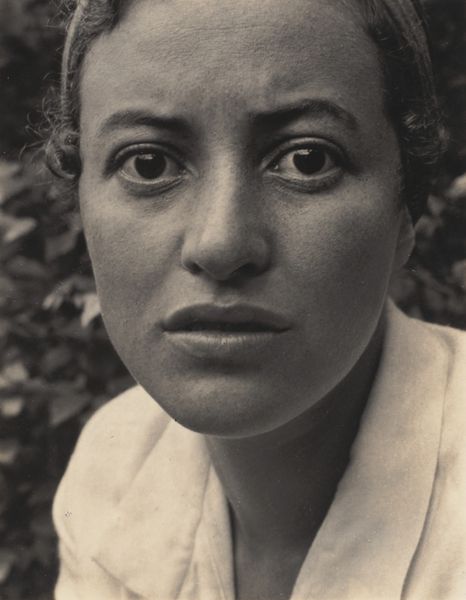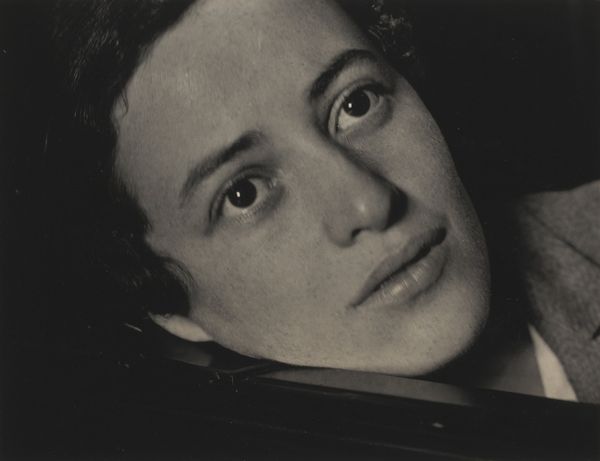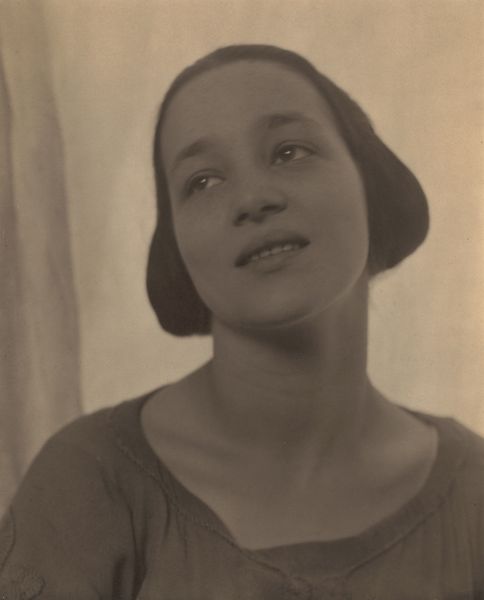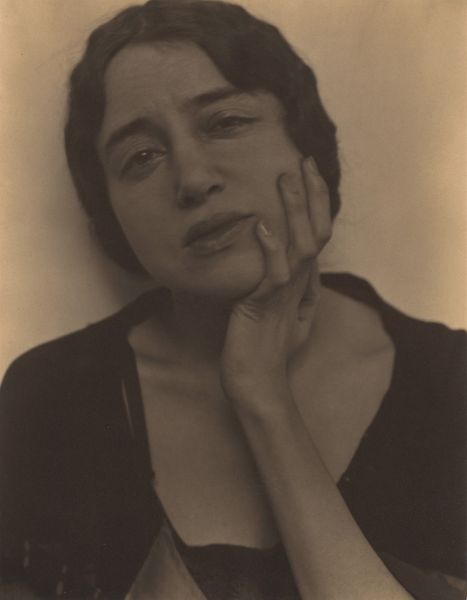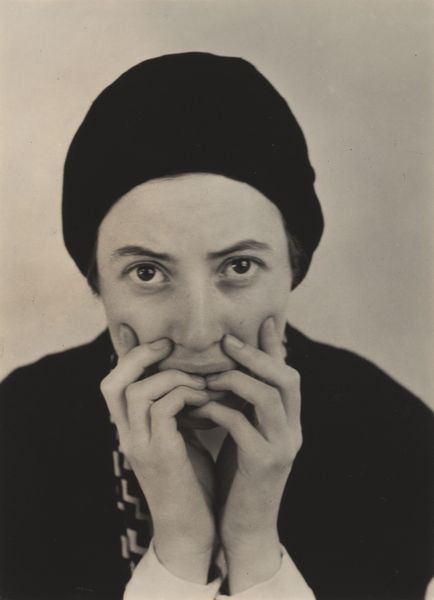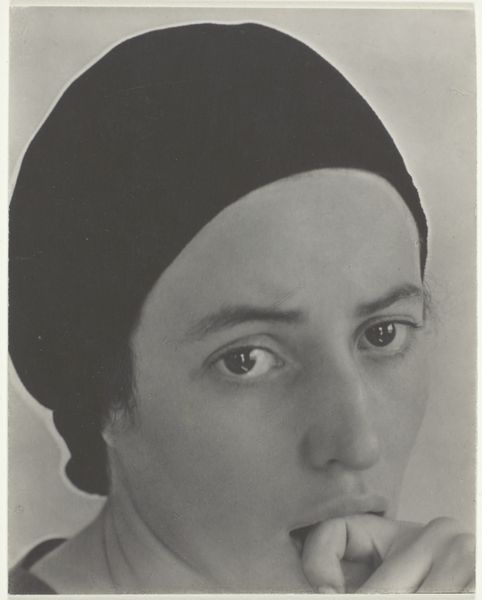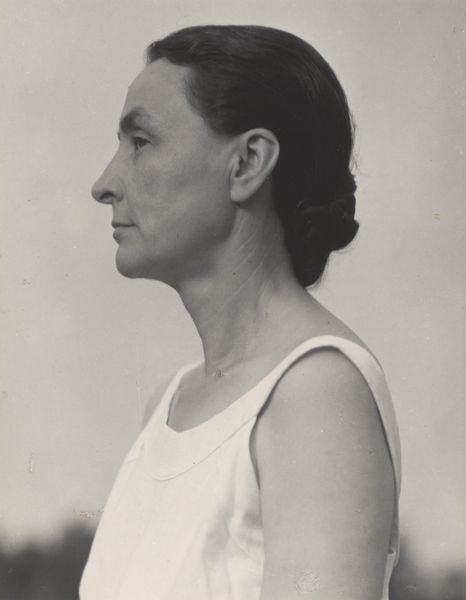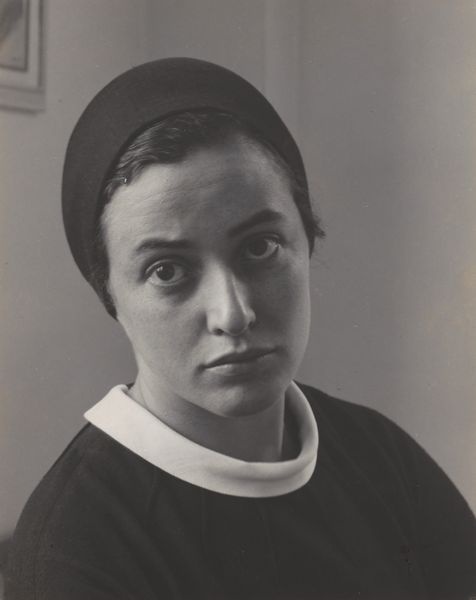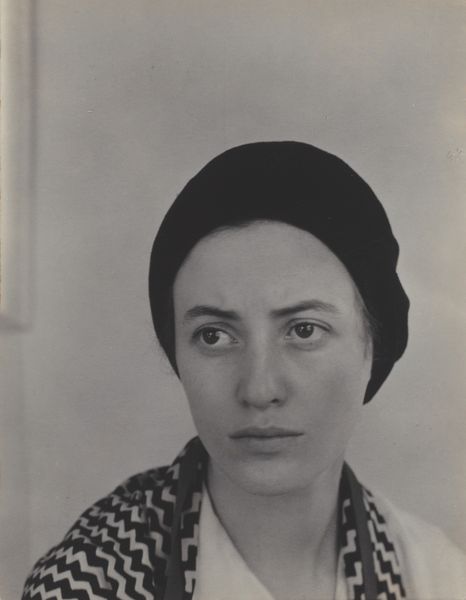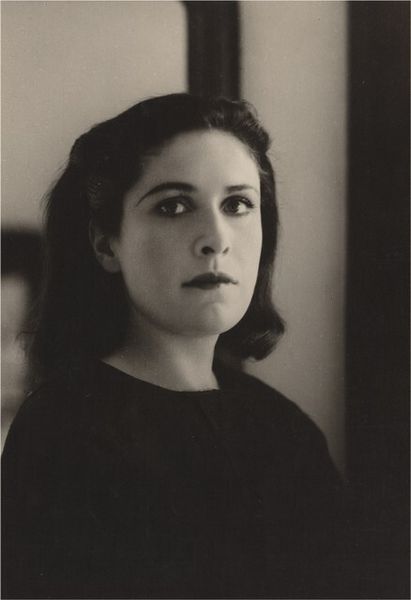
paper, photography, gelatin-silver-print
#
portrait
#
portrait image
#
portrait
#
paper
#
photography
#
gelatin-silver-print
#
modernism
#
realism
Dimensions: sheet (trimmed to image): 7.2 × 9.7 cm (2 13/16 × 3 13/16 in.) mount: 29.8 × 23.5 cm (11 3/4 × 9 1/4 in.)
Copyright: National Gallery of Art: CC0 1.0
Curator: There's something incredibly magnetic about this gelatin silver print. Dorothy Norman, captured by Alfred Stieglitz in 1931. I keep coming back to it. Editor: Yes, there’s a striking stillness. A certain gentle moodiness radiates from the photographic paper. It makes you wonder what she is thinking in that very moment. Curator: Precisely! This image is much more than just a photograph; it's a carefully constructed study of Dorothy, a woman who, beyond being Stieglitz’s lover, became an accomplished photographer and writer. Look at how Stieglitz uses light and shadow to sculpt her face, revealing both strength and vulnerability. You almost feel like you know her. Editor: The political and social dynamics, of course, are impossible to ignore. Stieglitz was a giant in the art world; Dorothy Norman, a woman coming into her own in a period of significant societal change. Her collaboration with, and later break from, Stieglitz offers an intimate window into gender, power and representation in the art world. How might we interpret that dynamic gaze today? Curator: Absolutely. It’s a fascinating conversation. But there's also the personal story etched into her expression. What was she contemplating, dealing with? Was it love, ambition, perhaps a brewing artistic storm within herself? Stieglitz captures that almost uncomfortably real quality, like peering into someone's soul unexpectedly. Editor: And how that ‘peering’ functions, really—the social act of exhibiting such private portraits within a public gallery, reshapes our understanding. These personal insights inevitably play into wider discussions about representation and cultural value at the time. It brings questions of voyeurism and even the politics of display into the conversation, which has to be explored with care. Curator: Care, certainly, but also courageous openness, don't you think? After all, isn't all art fundamentally vulnerable? Perhaps this very photograph invites the world in a bit further than some would like. It shows Norman looking towards something... longing perhaps for a space, literally and figuratively. I get the feeling this is a door being held open. Editor: I appreciate your perspective on that feeling, it’s valuable to connect art's personal impact with cultural factors when assessing pieces. The fact that a private moment may transform into public, provokes very distinct questions. Thanks for sharing, it helps give fresh meaning to the exhibit. Curator: My pleasure. It’s these shared discoveries that keep us evolving and re-experiencing art.
Comments
No comments
Be the first to comment and join the conversation on the ultimate creative platform.

